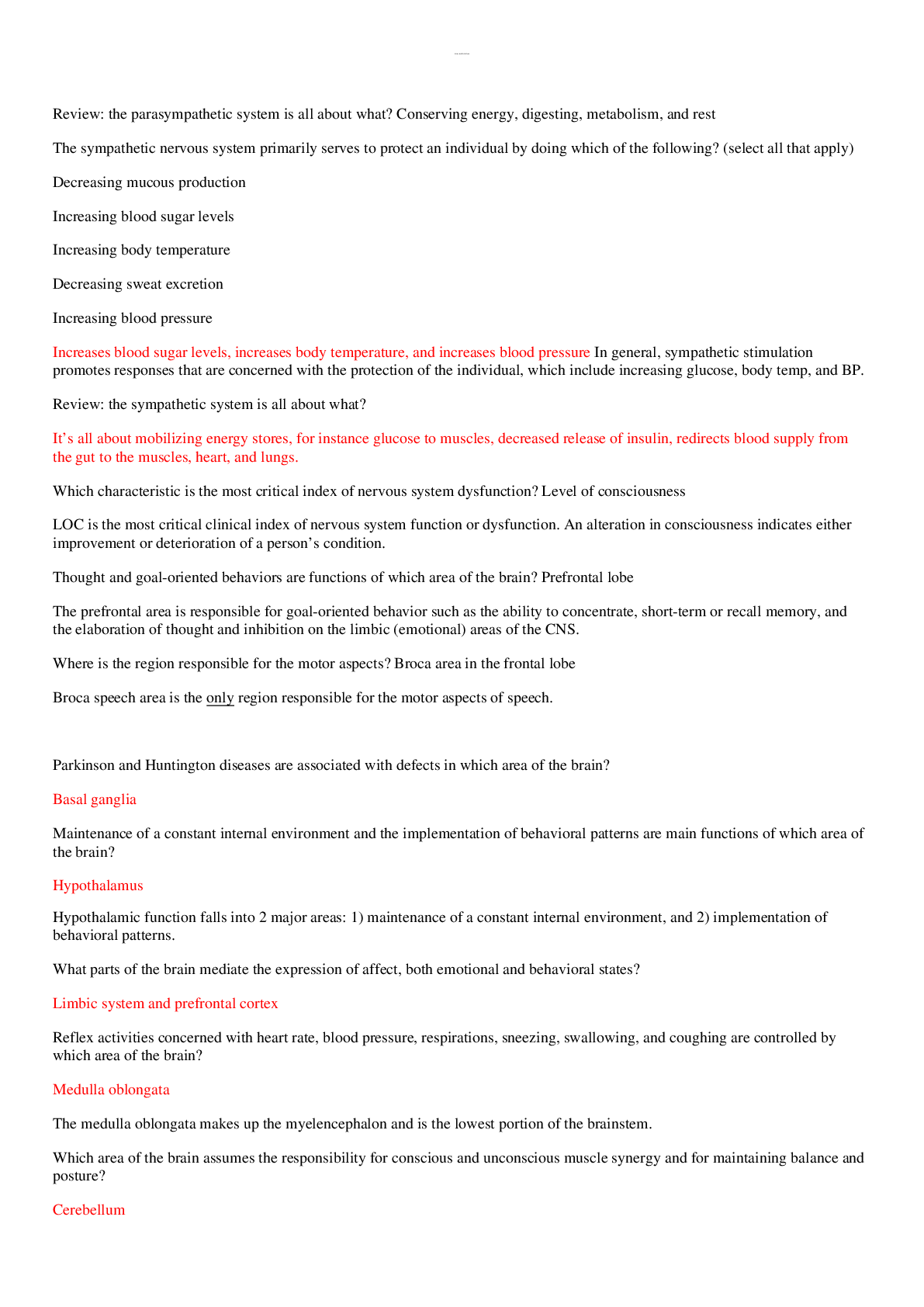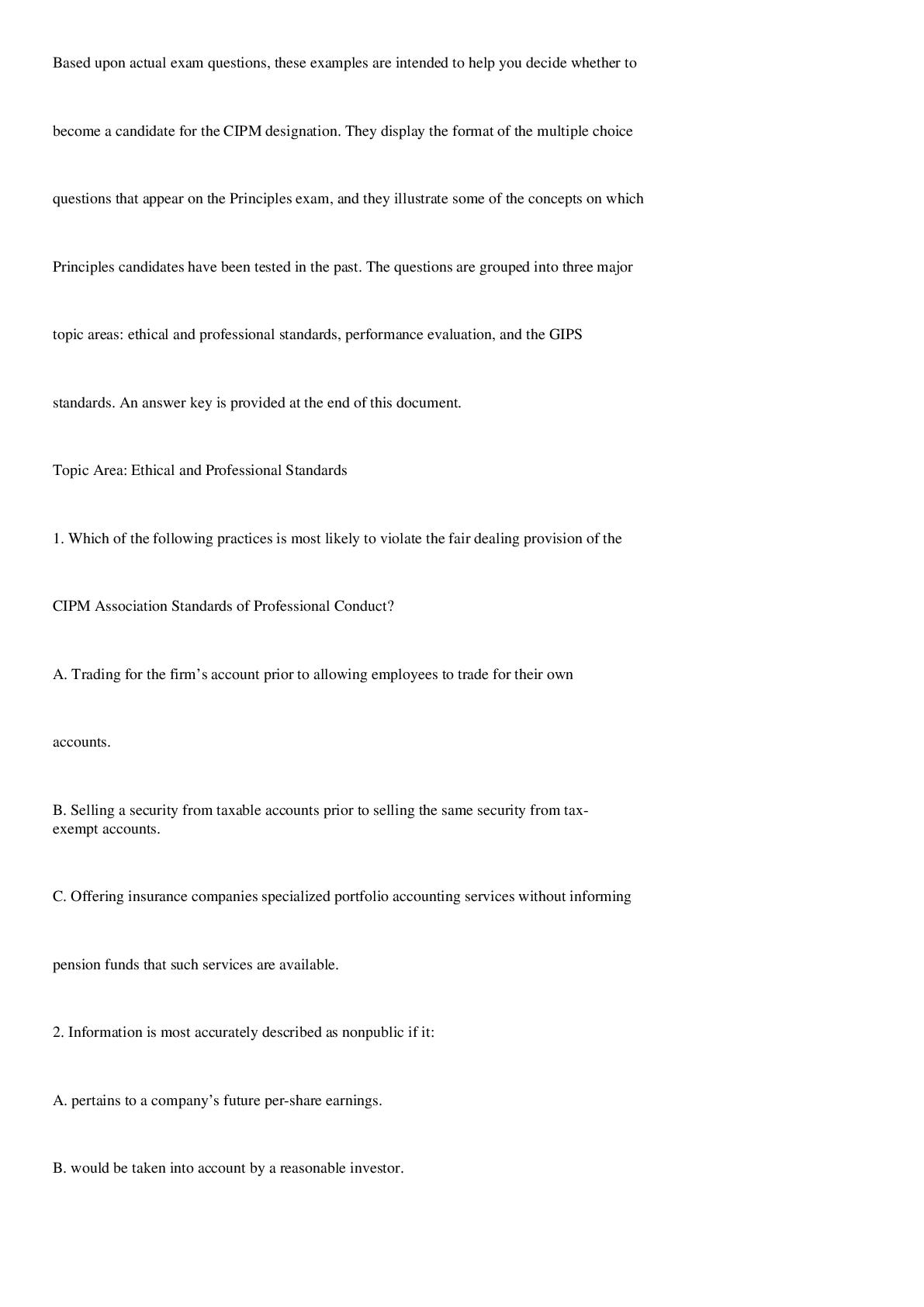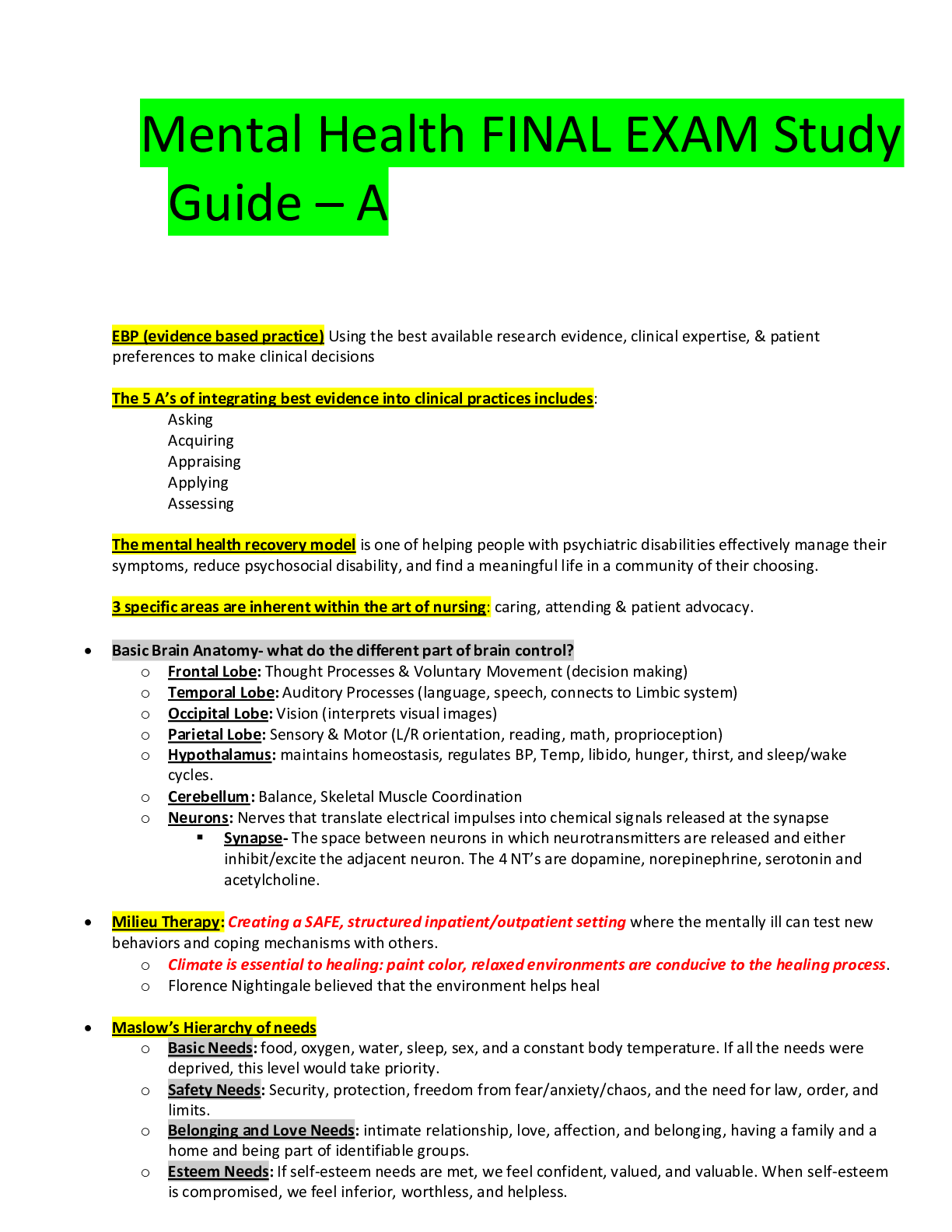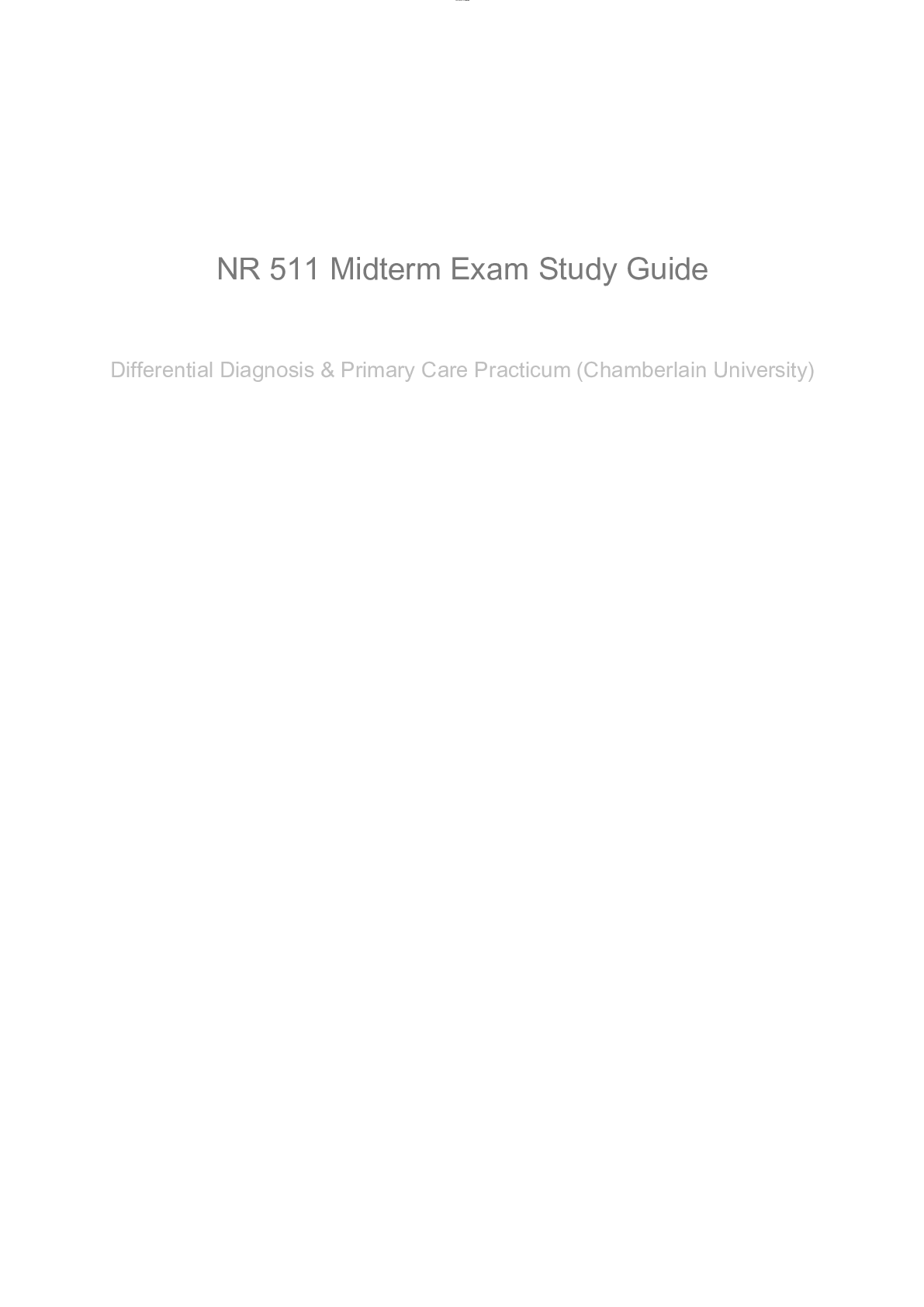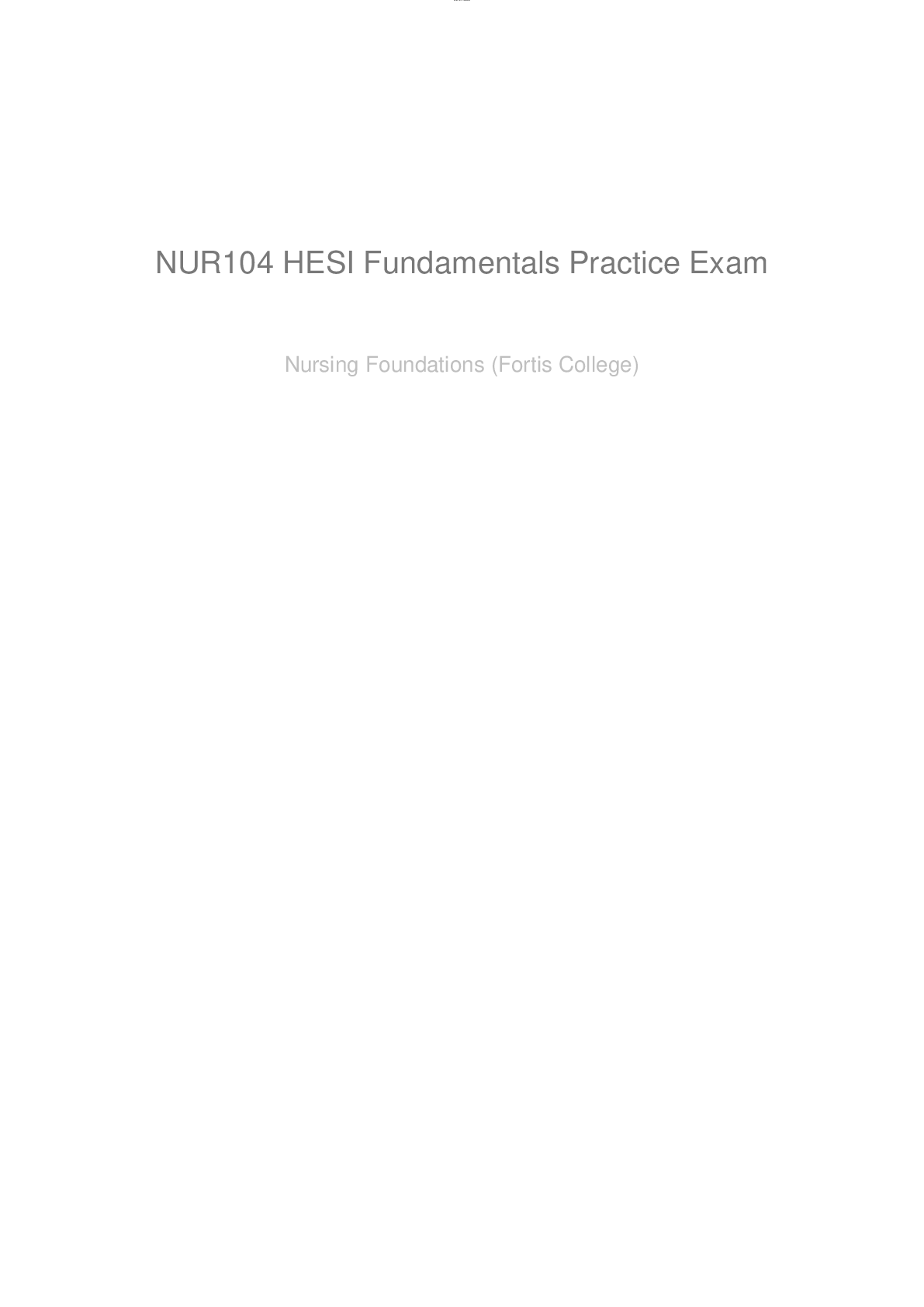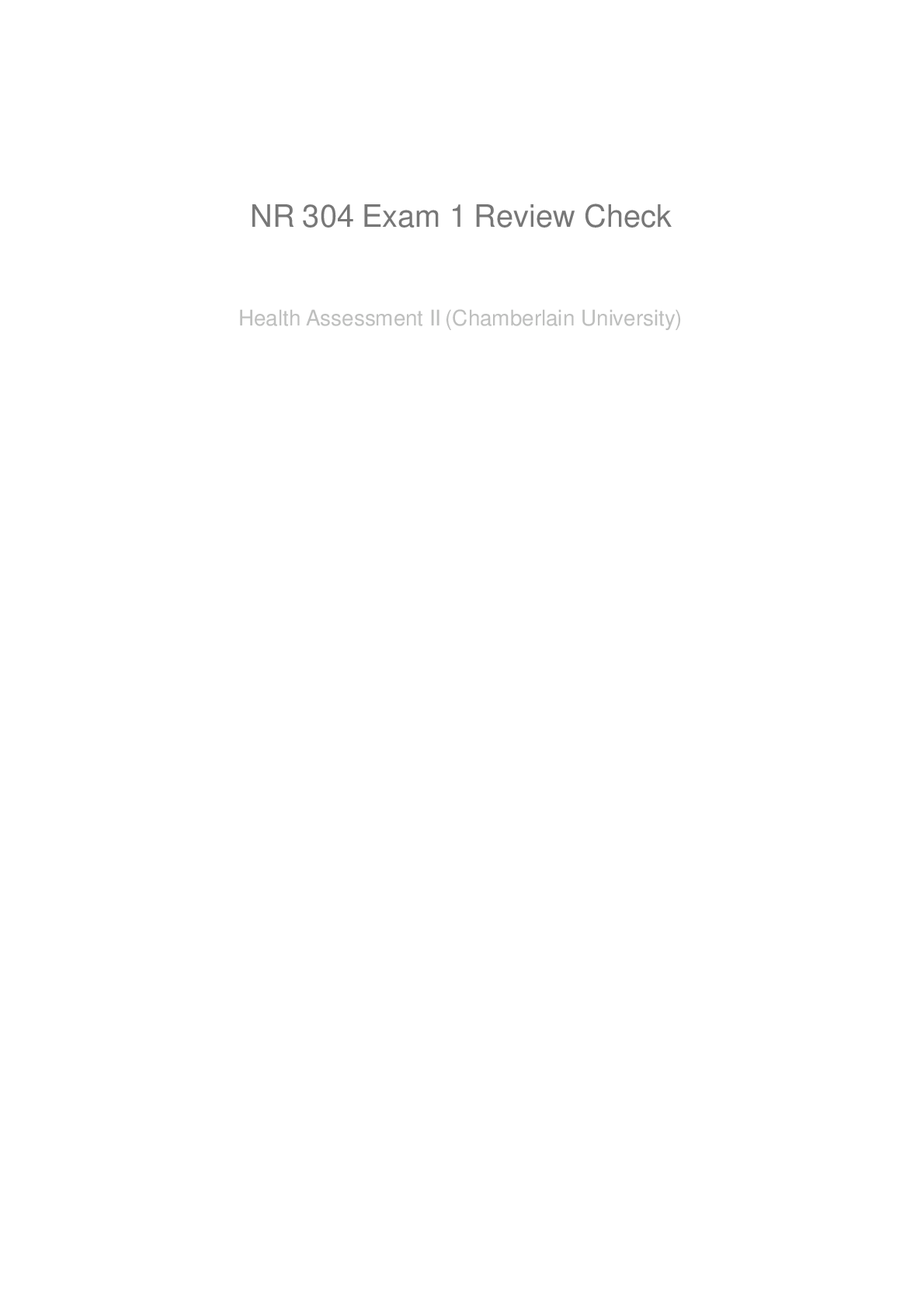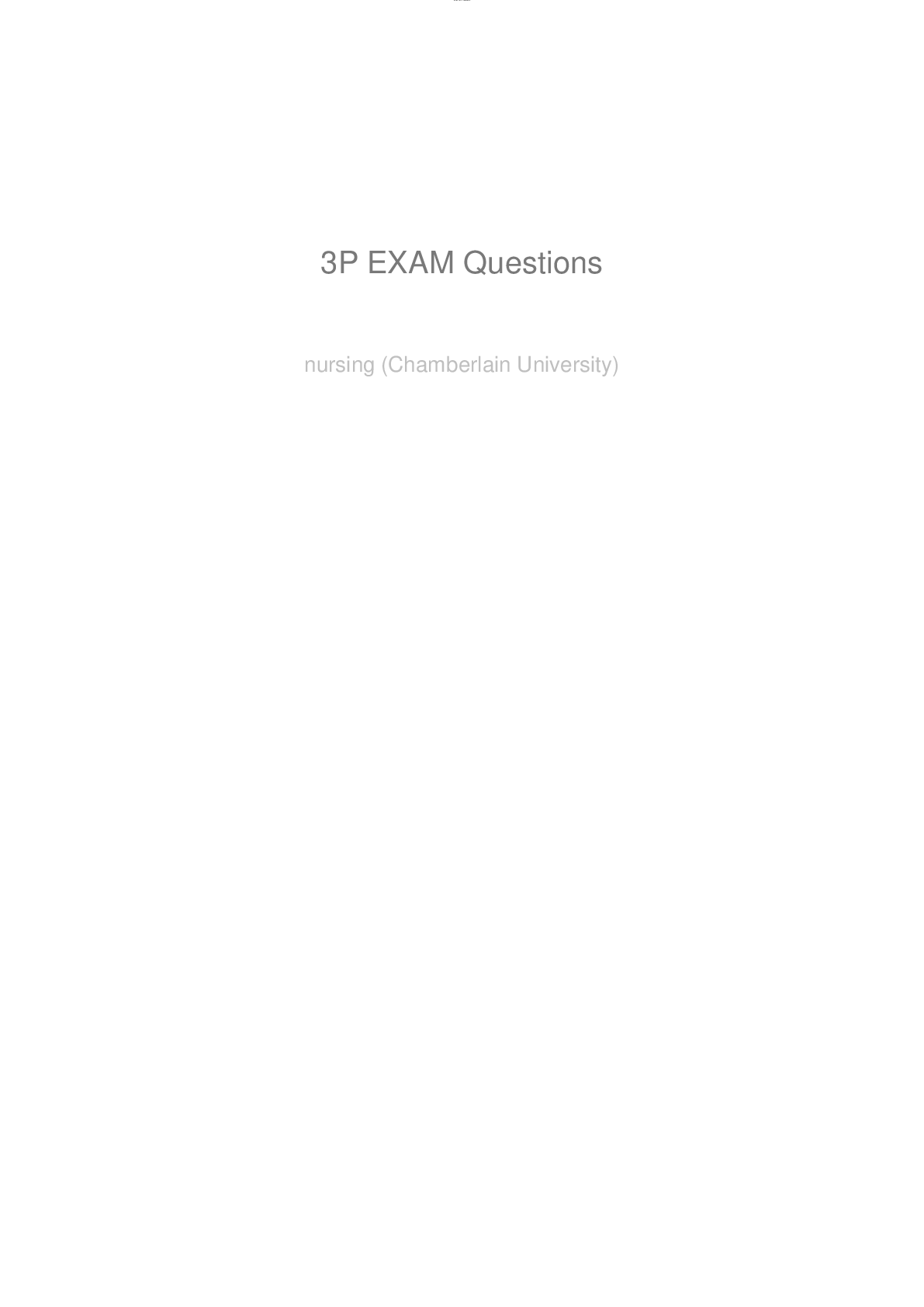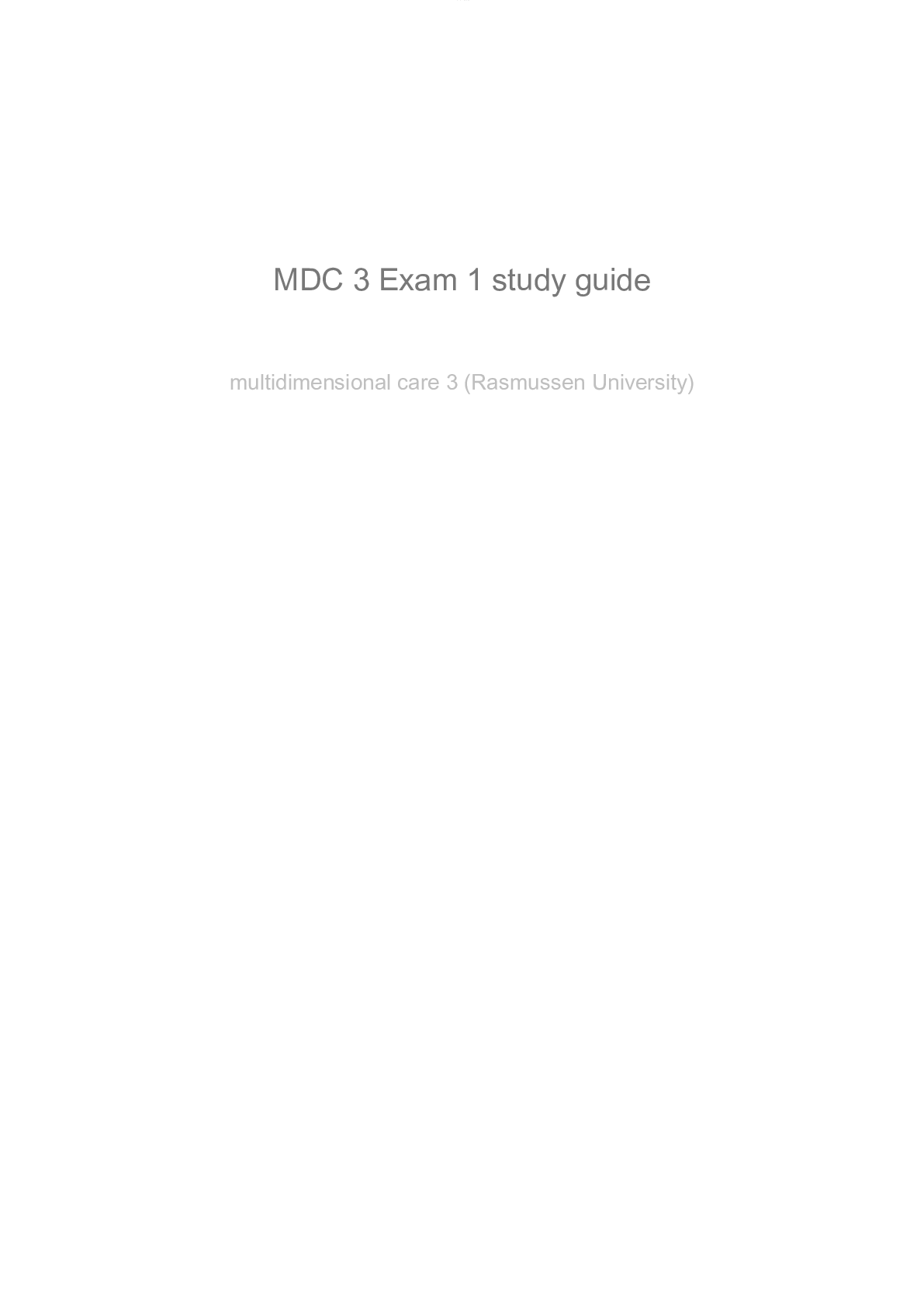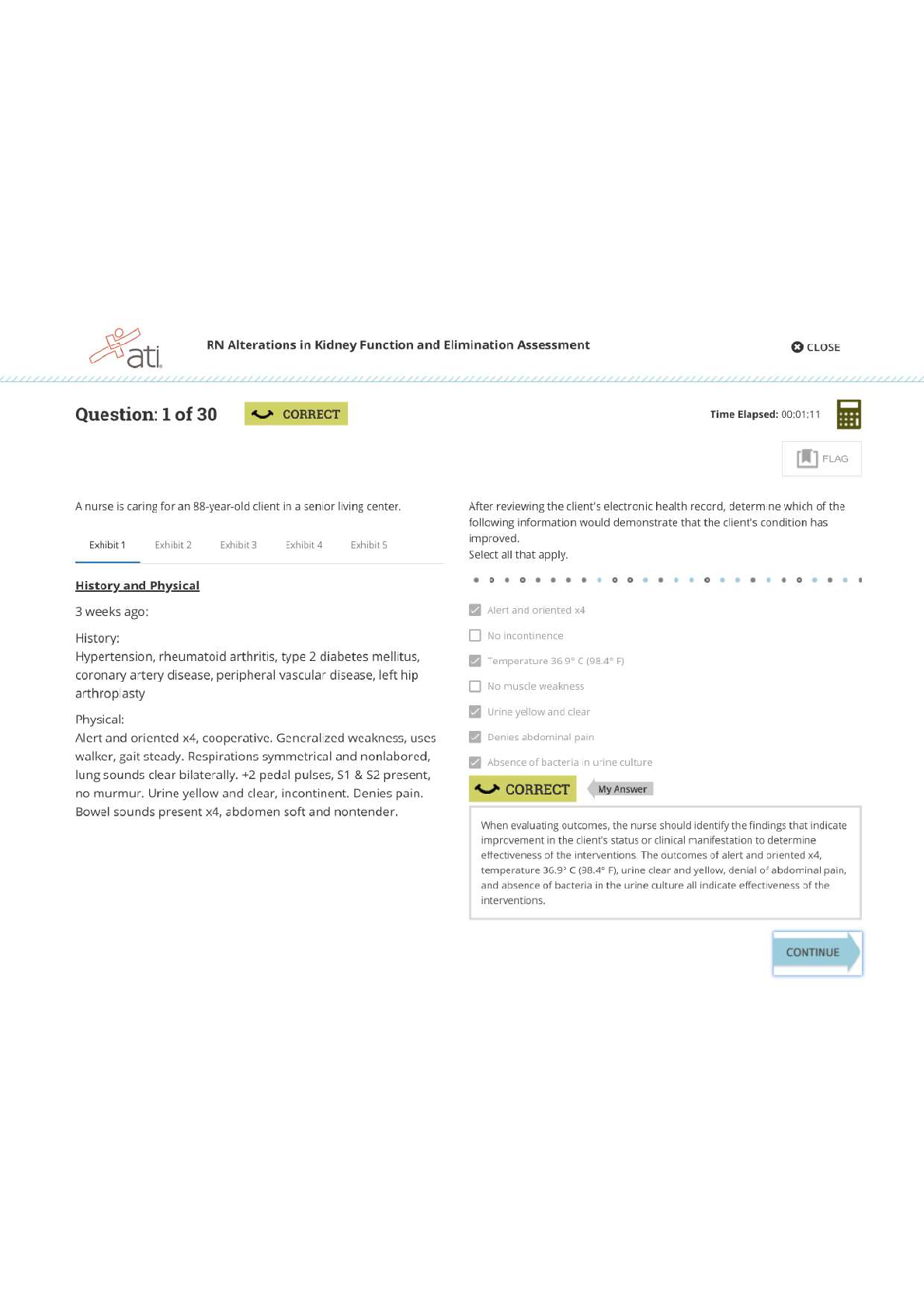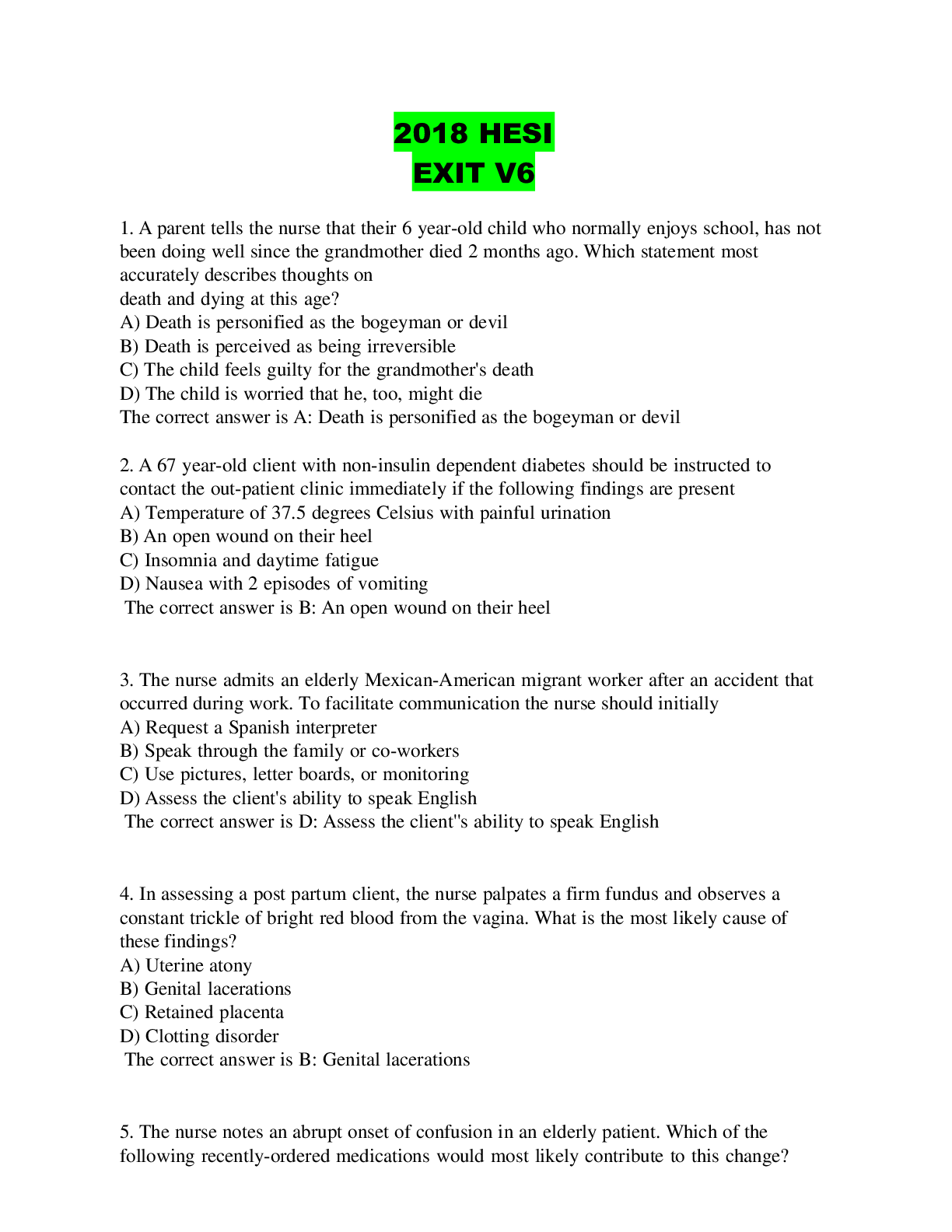Management > EXAM > MGMT100 Midterm Exam Latest (All)
MGMT100 Midterm Exam Latest
Document Content and Description Below
Question 1 of 20 People spend a considerable part of their working day _________ with others. One of the findings of the early work activity studies (Burns, 1954, 1957; Horn and Lupton, 1965), echo... ed more recently by Oshagbemi (1988), is that managers and others consistently underestimate the amount of time they spend ... A. relating B. hiding from C. talking about D. misunderstanding Question 2 of 20 _________ is a core competence. People who cannot _______ cannot relate. Nichols and Stevens (1957) estimate that 45 per cent of all communication time is spent __________ compared with 30 per cent speaking, 16 per cent reading and 9 per cent writing. Despite the fact that people spend so much time __________, few ever receive any formal training on how to __________ effectively. A. Talking B. listening, listening C. Observing D. selling Question 3 of 20 __________ __________is the kind of listening people engage in for pleasure. It might occur when listening to poetry or children playing.It involves the listener seeking out signals or messages that she wants to hear. A. Corrobative listening B. Demonstrative listening C. Appreciative listening D. Explanative listening Question 4 of 20 Being aware of one's own _________ _______ can help a person listen more effectively. A. personal filters B. great ideas C. careful observations D. sound beliefs Question 5 of 20 The _______ __________ offers a set of pointers to the kinds of behaviour that communicate a sense of presence to the speaker. These need not always be adhered to strictly. They are not rules, rather they are reminders of the importance of non-verbal behaviour. The listener?s body is a vehicle for communication and she should constantly be aware of all the cues and messages she is sending. A. next chapter B. holy books C. SOLER mnemonic D. summer memories Question 6 of 20 _____________ _____________ can also be used to regulate the communicative flow between people. The importance of a person?s regulatory skills is reflected by the evaluative statements we often make about others, such as, "talking to him is like talking to a brick wall", "you can't get a word in edgeways" or, "she keeps butting in". A. Non-verbal behaviours B. Meditative insights C. Relaxed approaches D. Open awareness Question 7 of 20 One of the most common definitions of the ____________ is "a conversation with a purpose" (Bingham, Moore and Bruce 1942). This is a wide ranging, umbrella-like definition, which encompasses many kinds of purposeful conversations ranging from disciplinary interviews to counselling sessions, and possibly even including negotiations. A. counseling-statement B. meeting C. walk-about D. interview Question 8 of 20 Psychological factors, such as attitudes, motives and expectations, can also be important sources of __________. The motivation of the interviewer and respondent to engage in the interview might be different.For example, in an appraisal interview the interviewer might be motivated to help the appraisee develop and realize his full potential, and, therefore, might regard seeking accurate information about the appraisee's strengths and weaknesses as an important objective of the interview. A. bias B. motivation C. insight D. agreement Question 9 of 20 __________ and motivation can be closely linked. What happens in the early stage of the interview can have important implications for the interviewee?s motivation, which in turn will influence the quantity and quality of information that will be available to the interviewer. Where motivation is low, the respondent may disrupt the interview, may refuse to answer any questions or may give false answers deliberately, thus defeating the interviewer?s purpose. A. Punishment B. Talkativeness C. Rapport D. Culture Question 10 of 20 The way in which the interviewer formulates her questions can have an enormous impact on the quantity and quality of information the respondent will disclose. Three aspects of question formulation will be considered here: (_______________), the extent to which the question signals an expected or preferred response (___________), and the degree of freedom given to the respondent to answer (________________). A. (choice of words),(leading questions), (open versus closed questions). B. (choice of methods),(fake questions), (creative questions). C. (insightfullness),(creative questions), (taxonomic questions). D. (choice of ideas),(follow-up questions), (inventive versus known questions). Question 11 of 20 Introductions that use _________ ____________, pose intriguing problems, include controversial statements or simply offer a concise statement of the purpose of the problem in terms that will appeal to the audience, increase the likelihood that the audience will be motivated to attend to the presenter's message. A. sarcastic sayings B. rhetorical questions C. Factual statements D. mystic notions Question 12 of 20 _______ ____ serve three main purposes. They introduce variety and capture people's attention and interest. They can also aid understanding and assist with recall. A. Good jokes B. Moving anecdotes C. Emotional appeals D. Visual aids Question 13 of 20 _____________ _____________ theory states that when individuals are subjected to events that are uncontrollable (that is, when the probability of an outcome is the same, irrespective of how they respond) they will develop expectations of non-contingency between response and outcome. A. Assertive trust B. Contingency aspect C. Control Expectation D. Learned helplessness Question 14 of 20 _______ is a key skill that builds upon the basic skills discussed elsewhere in this book. It involves letting clients know that they have been understood from within their frame of reference, that the helper can see the world as they see it while remaining separate from it. A. Authority B. Humor C. Empathy D. Persuasiveness Question 15 of 20 Unless the client thinks about his problem in __________, operational terms it can be difficult to develop an effective problem management strategy. A. concrete B. abstract C. psychological terms D. a selfless way Question 16 of 20 The _________ ________ is a model developed by Joseph Luft and Harry Ingham, two American psychologists, which can be used to illustrate the process of giving feedback. A. Feedback Loop B. Mendali Grid C. Psychological Contract D. Johari window Question 17 of 20 Helpful feedback is ( _____________). In many circumstances people seek feedback. However, although they want to know, they may be fearful of finding out. A. (solicited rather than imposed) B. (mysterious and causes questioning) C. (given so as not to be noticed) D. (sandwiched between criticism) Question 18 of 20 The __________ approach fits well with Egan?s integrative approach to problem management. When the client has identified and clarified the problem in concrete terms and determined what a more desirable state of affairs would look like he can specify, again in concrete terms, one goal or a related set of realistic goals. This provides the framework within which he can undertake a __________ analysis. The client can be encouraged to list all the restraining forces that are keeping him from his goal and all the driving forces that are helping him reach his goal. At this stage he should be encouraged to list as many as possible and to make no attempt to list them in order of importance. A. Blak-Mouton grid B. force-field C. Egan Checklist D. Goal-Setting grid Question 19 of 20 __________ is a key skill that builds upon the basic skills discussed elsewhere in this book. It involves letting clients know that they have been understood from within their frame of reference, that the helper can see the world as they see it while remaining separate from it. A. observation B. authoritarianism C. Empathy D. Deception Question 20 of 20 Blake and Mouton argue that _____ can help clients change their behaviour in a number of ways. A. advice B. criticism C. humiliation D. theory [Show More]
Last updated: 11 months ago
Preview 1 out of 5 pages
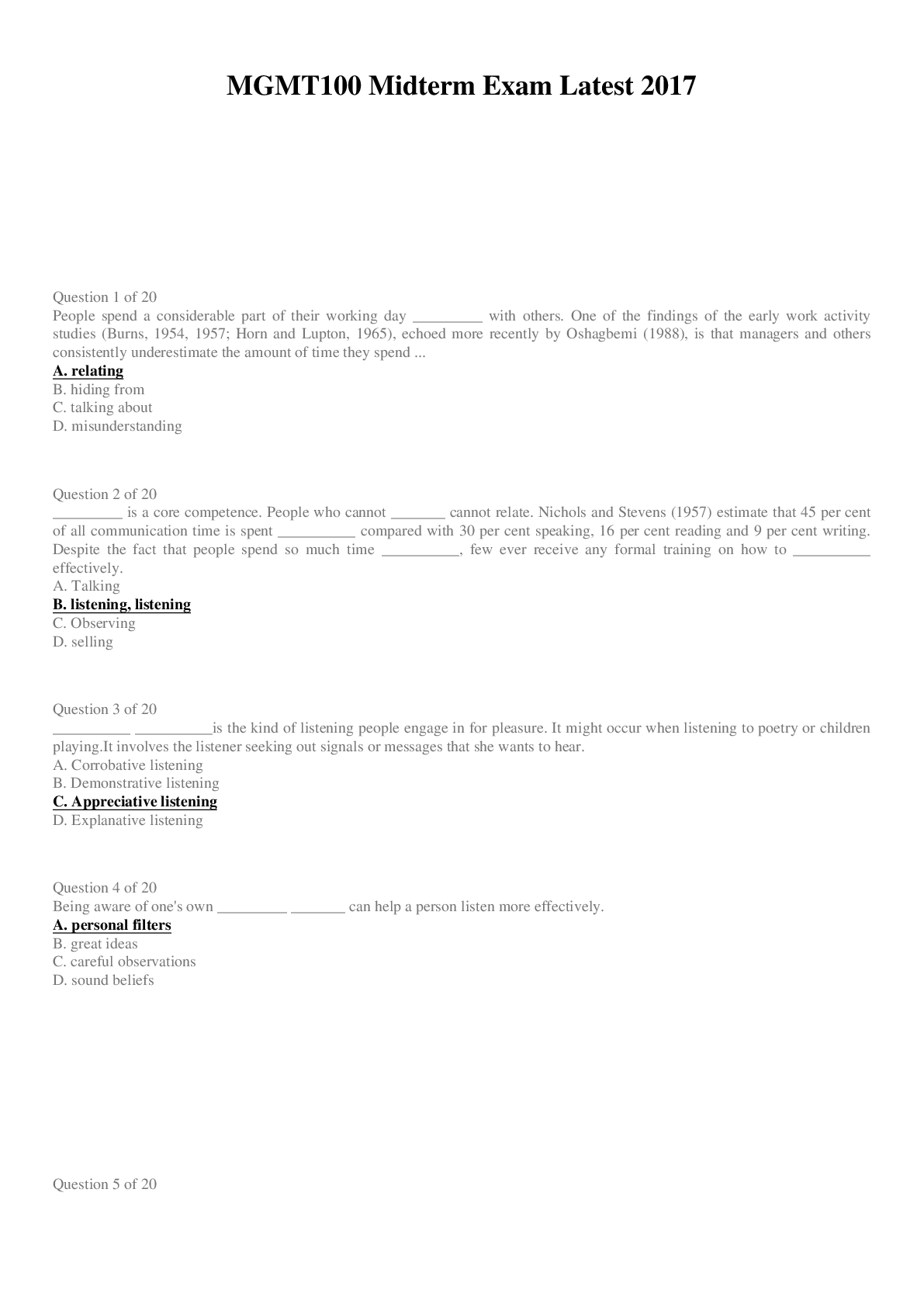
Reviews( 0 )
Document information
Connected school, study & course
About the document
Uploaded On
Nov 17, 2020
Number of pages
5
Written in
Additional information
This document has been written for:
Uploaded
Nov 17, 2020
Downloads
0
Views
137


